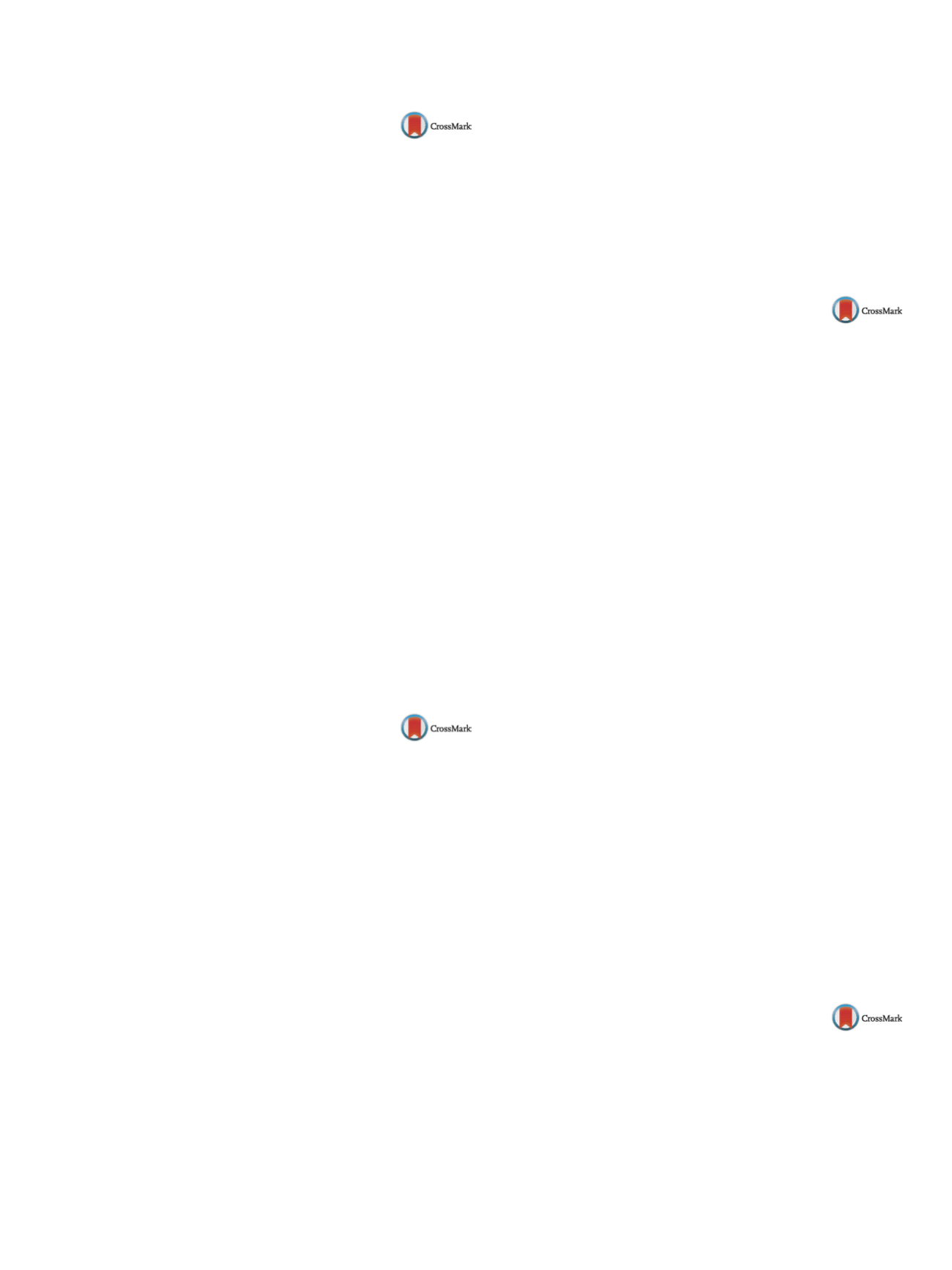

25th European Congress of Psychiatry / European Psychiatry 41S (2017) S847–S910
S851
EV1358
The importance of psychosexual
variables in the sexual functioning in
sexually active adults
H. Pereira
University of Beira Interior, Psychology and Education, Covilhã,
Portugal
Introduction
Sexuality is a very important human dimension
which contributes to psychosocial well-being and psychosexual
variables, such as sexual self-esteem, sexual anxiety and sexual
depression, can affect sexual functioning; however, there are few
studies that demonstrate this relationship.
Objectives
To assess the psychosexual variables and sexual per-
formance levels in a sample of adults, and verify and determine the
degree of association between sexual functioning and self-esteem,
anxiety and sexual depression.
Methods
The study included 422 adults that were sexually active
(who had sex in the previous month); 265 (62.8%) were women and
149 (35.3%) were men, who filled out a sociodemographic ques-
tionnaire and scales related to sexuality and sexual functioning,
Sexuality Scale and Sexual Functioning Questionnaire Short Form
(CSFQ 14), broadcast over the internet.
Results
The results obtained allowed to know the relationships
between the variables and psychosexual sexual functioning, and
was statistically significant correlation between the two dimen-
sions and significant differences between the correlation when
comparing gender and sexual orientation.
Discussion and conclusions
This study allows us to highlight
the importance of psychosexual variables in sexual functionality
expression, in the sense that those working in the area of sexuality
should be aware of how the human psyche interferes with sexual
manifestation.
Disclosure of interest
The author has not supplied his/her decla-
ration of competing interest.
http://dx.doi.org/10.1016/j.eurpsy.2017.01.1688EV1359
Sexual dysfunction in obese women
R. Sellami
1, M. Moalla
1, L. Affes
2, I. Feki
1, F. Mnif
2,
M. Abid
2, J. Masmoudi
1 ,∗
1
Hedi chaker Hospital, psychiatry A, Sfax, Tunisia
2
Hedi chaker Hospital, endocrinology, Sfax, Tunisia
∗
Corresponding author.
Introduction
The increasing prevalence of obesity represents a
major public health problem, with can effect on physical and
emotional well-being and psychosocial function. Somatic and psy-
chological dysfunctions, such as infertility, osteoarthritis, social
disabilities caused by stigmatization, sleeping problems or apnea,
are also known to follow obesity. Sexual dysfunction (SD) may also
be related to obesity, but is rarely mentioned, and may cause con-
cern for the affected individual and partner, constituting a great
problem.
Objectives
The aim of this study was to identify the frequency of
SD among obese women.
Methods
Our study concerned 42 obese married women consult-
ing in endocrinology department. Obesity was defined by body
mass index (BMI)
≥
30. All participants assessed a sociodemo-
graphic data and the “Female Sexual Function Index” (FSFI). FSFI
is a 19-item multidimensional self-reporting measure that quan-
tifies six domains of female sexual dysfunction (FSD), including
desire, arousal, lubrication, orgasm, satisfaction, and pain. Score
≤
26 indicate the presence of FSD.
Results
The mean age was 33.6 years (20
→
47 years). The mean
total score of FSFI was 22.5 (3.2
→
32.6). The percentage of SD
among obese women was 68.2%. FSFI score was correlated to
ancient obesity (
P
= 0.026;
r
= 0.347) and waist circumference
(
P
= 0.007;
r
= 0.412). High socio-economic level was correlated
to desire and satisfaction (
P
= 0.021 and
P
= 0.048 respectively).
Women with high educational level have better blurbification
(
P
= 0.005). FSFI score was not correlated to BMI or obesity class.
Conclusion
Almost two-thirds of obese women have sexual
dysfunctions. Women with ancient obesity and higher waist cir-
cumference seemed to have better sexual functions.
Disclosure of interest
The authors have not supplied their decla-
ration of competing interest.
http://dx.doi.org/10.1016/j.eurpsy.2017.01.1689EV1360
Rethinking classification of zoophilia
D. Sendler
1 ,∗
, M. Lew-Starowicz
21
University of Lublin Medical School, Department of Psychiatry and
Sexual Consultation Clinic, Lublin, Poland
2
Institute of Psychiatry and Neurology, III Department of Psychiatry,
Warsaw, Poland
∗
Corresponding author.
Introduction
In 2011, Anil Aggrawal proposed ten-point classifi-
cation system of zoophilia, based on forensic literature review.
Objectives
(1) Allow for conceptualization and improved man-
agement of zoophilic patients in clinical practice or forensic
examinations, (2) describe identity of modern-day zoophiles,
including demographics and psycho-social profile, and (3) deter-
mine normative and pathologic traits and behaviours.
Methods
A qualitative observational study of user activity
(
n
= 958) on discussion forums, combined with brief demographic
survey. Data were analyzed according to principles of grounded
theory. Surveys of own design (demographic, discreet + open ended
questions) were answered by 350 participants. Presented data
show aggregate conclusions from mixed methods qualitative and
quantitative analysis.
Results
Proposed classification system categorizes zoos as either
classic, sexual, romantic, or platonic. Relationship goals of clas-
sic and romantic zoos are reminiscent of those typical of human
partnership, differentiated by the commitment and psychologi-
cal distress level (romantic zoos, affectionate relationship goals
outweigh sexual pursuit; classic zoos, romantic and sexual urges
cause distress rather than pleasure). Sexual zoos show high preva-
lence of hypersexuality traits. Platonic zoos are typically confused
about the roots of their sexuality. Contrary to common percep-
tions, prevalence of sexual sadism is extremely low (<1% in our
study). Sociopathic traits determine propensity for animal cruelty,
which is not synonymous with typical zoophilia. Half of respon-
dents were in committed relationship with human partner, whom
they frequently attempted to “convert” into practicing zoophile.
Conclusions
We can categorize zoophiles into four sub-types.
Emotional attachment and sexual urges play equal role in bonding
with animal partner.
Disclosure of interest
The authors have not supplied their decla-
ration of competing interest.
http://dx.doi.org/10.1016/j.eurpsy.2017.01.1690EV1361
Digital communities of people with
paraphilia: A study of zoophiles
D. Sendler
1 ,∗
, M .Lew-Starowicz
21
University of Lublin Medical School, Department of Psychiatry and
Sexual Consultation Clinic, Lublin, Poland
2
Institute of Psychiatry and Neurology, III Department of Psychiatry,
Warsaw, Poland
∗
Corresponding author.
Introduction
Accessibility of the Internet allows people to con-
nect anonymously and without boundaries – features particularly


















